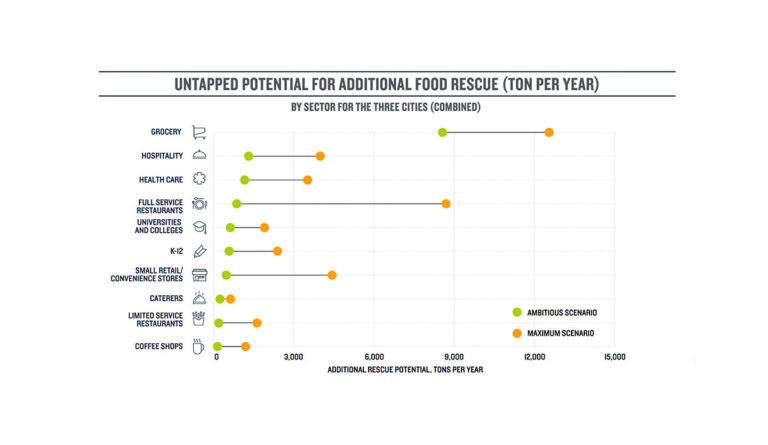Rescuing Food for Family Health
The United States throws about 40% of its food away each year, costing about $218 billion. A recent report from the Natural Resources Defense Council shows what kind of food gets wasted and potential for food rescue.

Read Time: 2 minutes
Published:
The United States throws about 40% of its food away each year, and with it, about $218 billion. Despite this, forty-one million people (one in six) experience food insecurity in the United States. If this food waste was somehow avoided, we would be able to feed those 41 million people plus about 122 million more—which is nearly the entire population of Japan.
The Natural Resources Defense Council (NRDC) released a report in October 2017 that details just what kind of food the US wastes and how to recover food that would otherwise contribute to a shameful country-wide habit. One major focus of the report was on food waste in various city-level sectors such as grocery stores, restaurants, schools, and health care.
As the graph above shows, restaurants might contribute the greatest volume of food waste but have low potential for food rescue as most food is considered “post-consumer.” Grocery stores, on the other hand, could be a major source of usable, donated foods like fruits, vegetables, meat, and other nutritious foods.
The NRDC also surveyed households and found that nearly 70% of all food wasted in homes is edible, but also that 76% of participants in the study believed they “wasted less food than the average American.” Ultimately, the report argues that while household efforts are beneficial, policy changes and community efforts to reduce food waste and recover surplus are a much-needed, untapped source of food for people and families in need.
Databyte via Food Matters: What Food We Waste and How We Can Expand the Amount of Food We Rescue. Natural Resources Defense Council.



